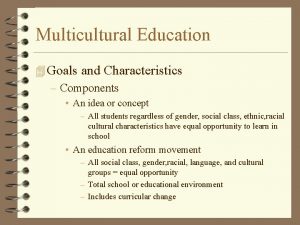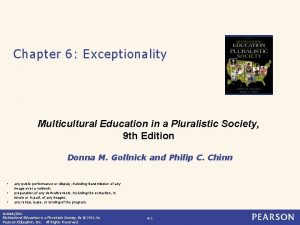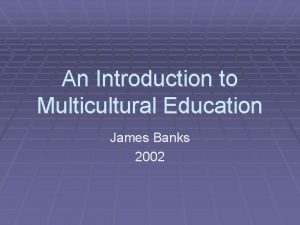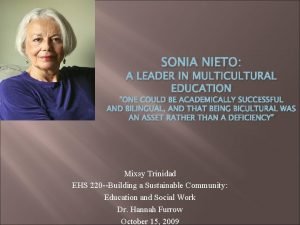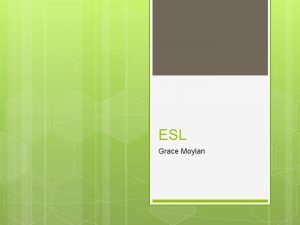English Language Learners Multicultural Education Acronyms ESL English







- Slides: 7

English Language Learners Multicultural Education

Acronyms ESL: English as a Second Language ELL: English Language Learners LEP: Limited English Proficiency

Parents of LEP students It is the perception of parents of LEP students that U. S. schools tend to foster individualism and independence in their children to the extent that they fail to learn social responsibilities toward the family. Parents of LEP students tend not to participate in PTO/PTA and other school groups. This is not because they lack concern or interest; they genuinely believe that is up to the school or district to decide policy and procedures The roll of family and child-rearing practices, may directly conflict with expectations of U. S. school personnel. Experience difficulty with “democratic” ideals reflected in U. S classrooms. Non U. S. schools tend to be highly authoritarian and are closely connected to their governments.

HELPING PARENTS OF ENGLISH LANGUAGE LEARNERS Teach them how U. S. school systems work in general; understand how the local school district and school operate. Need help knowing what is expected of them: participation in their child’s education, school groups etc. . Understand how cooperating agencies work. Understand child’s rights and eligibility for instructional support services. Understand how grading policies work

Strategies for involving parents of ESL students Utilize parents as school volunteers Emphasize positive aspects of their children Encourage participation in multicultural activities that validates their respective cultures. Use different methods of making contact, minimize written contact and maximize direct human contact in language(s) parents understand. Incorporate social events into meeting plans Whenever possible, provide meetings in parents’ language(s) Become familiar with and develop a working knowledge of the various elements of the cultures in your school.

Hints for teachers… Learn to pronounce each student name Review background information Learn about student’s home country Use a class “buddy” Simplify directions Provide consistency in classroom regulations Expect students to experience “culture shock” (anxiety, mood swings, homesickness, tears, physical problems…)

Teaching Strategies Storytelling Show and Tell Visits from Parents Culture in Content Area Acting it Out Use interactive hands-on lessons Cooperative learning




